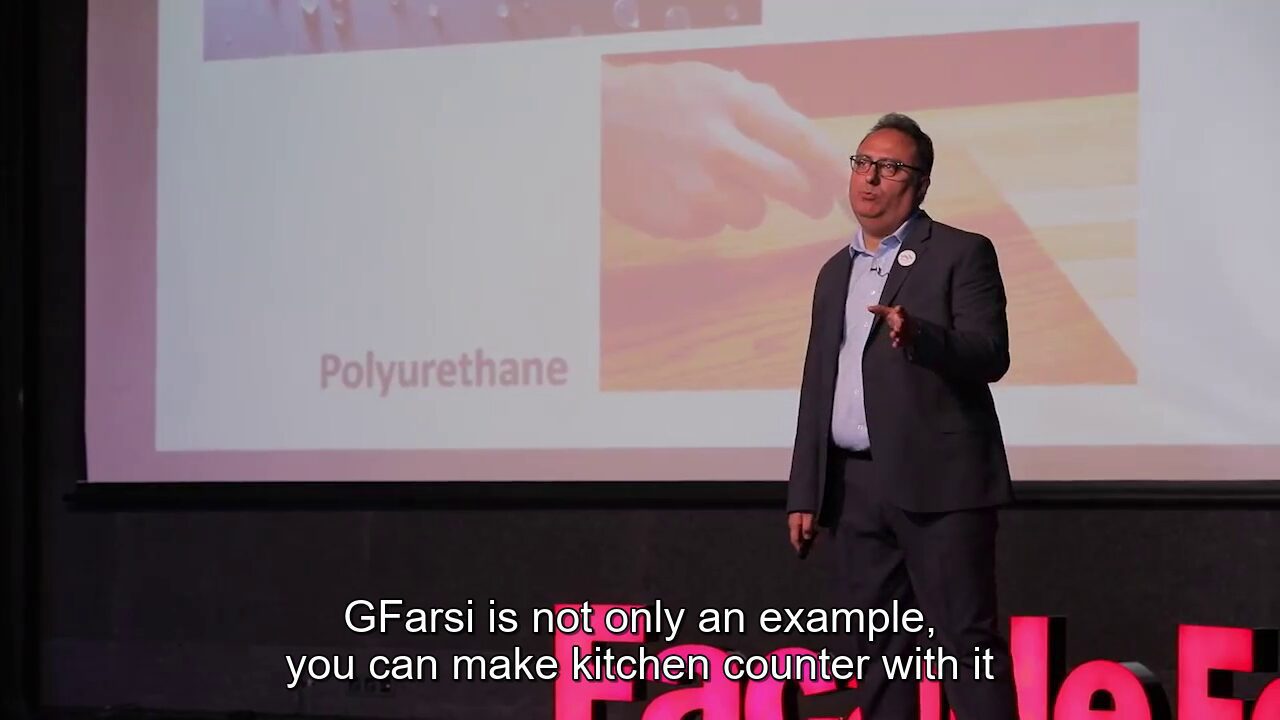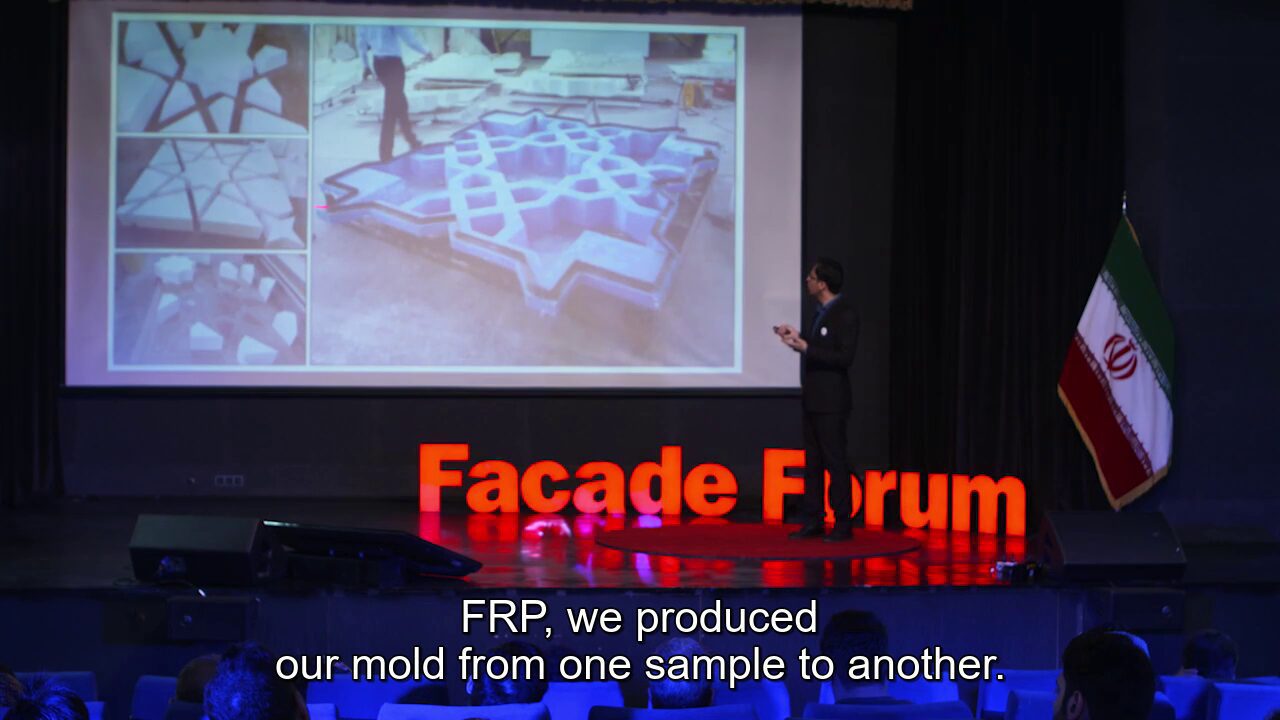موردکاوی پوسته بتن GFRC پروژه خانه مدرن پاسارگاد
از الهام سنگ تا اعجاز معماری: خانه مدرن پاسارگاد
در قلمرو معماری، الهام اغلب از طبیعی ترین عناصر ناشی می شود و منجر به آفرینش هایی می شود که نه تنها به عنوان نشانه هایی از نبوغ بشر هستند، بلکه با محیطی که در آن قرار دارند به طور یکپارچه ترکیب می شوند. خانه مدرن پاسارگاد نمونه بارز چنین پروژه ای است که نمادگر این هماهنگی بین طبیعت و معماری است. در FacadeForum 2019، سرکار خانم مریم لعل روشن، عضو تیم مهندسی AlumGlass، بینش هایی را در مورد آغاز پروژه، چالش ها و راه حل های نوآورانه ای که این اثر معماری را به زندگی رساند، به اشتراک گذاشت. این پست وبلاگ به نکات کلیدی ارائه او می پردازد و نگاهی اجمالی به فرآیند تفکر دقیق و خلاقیت پشت خانه مدرن پاسارگاد می اندازد.
خاستگاه ایده نما : الهام از طبیعت
الهام بخش پروژه سنگی ساده از نسرآباد نزدیک مشهد بود. این سنگ که در یک مسابقه به نمایش درآمد، نه تنها به دلیل بافت یا رنگ الهام بخش بود، بلکه نماد آرامش، وضوح و رفاه بود. هدف این بود که این ویژگی ها را در خانه مدرن پاسارگاد منعکس کند و ساختمان را به نمادی از آرامش و فراوانی تبدیل کند.
تحقق بخشیدن به چشم انداز :انتخاب متریال مناسب فرم نما
انتخاب مواد نقش محوری در تحقق بخشیدن به مفهوم پروژه داشت. استفاده از بتن مسلح به الیاف شیشه (GRC) و ETFE (اتیلن تترافلوئورواتیلن) امکان طراحی را فراهم کرد که هم از نظر زیبایی شناسی دلپذیر و هم کاربردی باشد. GRC استحکام و بافت سنگ را ارائه می دهد، در حالی که ETFE بخش های شفاف و نورگیر را فراهم می کند و باعث افزایش باز بودن سازه و ارتباط آن با طبیعت می شود.

چالش ها و راه حل های مهندسی
ملاحظات وزن و سازه نما
یکی از چالش های مهم رعایت محدودیت های وزنی پروژه بود. راه حل استفاده از پانل های GRC بود که استحکام مورد نظر را بدون سنگینی بتن سنتی ارائه می داد و در نتیجه استحکام سازه ای و جذابیت بصری طراحی را حفظ می کرد.
انعطاف پذیری معماری متریال نما
انعطاف پذیری GRC همچنین به این معنی بود که پانل ها را می توان در اشکال مختلف قالب گیری کرد و به معماران اجازه می دهد تا بافت و شکل سنگ طبیعی را تکرار کنند. این تطبیق پذیری برای وفادار ماندن به الهام اصلی در عین حال برآورده کردن الزامات عملی ساخت و ساز بسیار مهم بود.
پالش های فنی و اجرایی نما بتنی
قالب گیری و مدولار سازی
تیم مهندسی فرآیند دقیق ساخت قالب و تعیین مدولار بودن پروژه را آغاز کرد. این فاز در اطمینان از تولید، حمل و نقل و مونتاژ کارآمد پانل های GRC بدون خدشه دار کردن یکپارچگی طراحی بسیار مهم بود.
طراحی پارامتریک و الگوریتم ها
با استفاده از طراحی پارامتریک و الگوریتم های گرس هاپر، تیم توانست به سطحی از دقت و سفارشی سازی در طراحی پانل ها دست یابد و در نتیجه منحصر به فرد بودن سازه و شباهت آن به سنگ طبیعی الهام بخش آن را بیشتر کند.
ملاحظات حمل و نقل و مونتاژ
با توجه به مقیاس پروژه و خواص منحصر به فرد پانل های GRC، تیم مجبور شد برای حمل و نقل و مونتاژ ایمن آنها راهبردهایی را اتخاذ کند. این شامل برنامه ریزی دقیق اندازه و شکل پانل ها برای تسهیل حمل و نقل و نصب بود.

پایداری و زیبایی شناسی نما : هماهنگی با محیط زیست
یکی از اصول اساسی خانه مدرن پاسارگاد همزیستی آن با محیط اطراف بود. این پروژه نه تنها در ظاهر خود از طبیعت تقلید می کرد، بلکه در تاثیرگذاری آن نیز تلاش می کرد تا پایداری و حداقل اختلالات اکولوژیکی را داشته باشد.
لزوم همکاری بین رشته ای در مهندسی نما
موفقیت این پروژه گواهی بر تلاش های مشترک معماران، مهندسان و متخصصان مواد بود. هر رشته تخصص خود را به صحنه آورد تا اطمینان حاصل شود که چشم انداز خانه مدرن پاسارگاد بدون مصالحه محقق شود.

From Stone Inspiration to Architectural Marvel: The Modern House of Pasargad GFRC Facade
In the realm of architecture, inspiration often stems from the most natural elements, leading to creations that not only stand as testaments to human ingenuity but also blend seamlessly with the environment they inhabit. One such project that epitomizes this harmony between nature and architecture is the Modern House of Pasargad. At the FacadeForum 2019, Mrs. Maryam Roshan, a distinguished member of the AlumGlass engineering team, shared insights into the project’s inception, challenges, and innovative solutions that brought this architectural marvel to life. This blog post delves into the key takeaways from her presentation, offering a glimpse into the meticulous thought process and creativity behind the Modern House of Pasargad.
Inspiration from Nature
The project’s inspiration was an unassuming stone from Nesavur, near Mashhad. This stone, showcased in a competition, was not just a muse for its texture or color but symbolized peace, clarity, and prosperity. The aim was to mirror these attributes in the Modern House of Pasargad, making the building a beacon of tranquility and abundance.
Materializing the Vision: Choosing the Right Materials
The choice of materials was pivotal in bringing the project’s concept to life. The use of Glassfibre Reinforced Concrete (GRC) and ETFE (Ethylene Tetrafluoroethylene) allowed for a design that was both aesthetically pleasing and functional. GRC offered the sturdiness and texture of stone, whereas ETFE provided clear, skylight sections, enhancing the structure’s openness and connection with nature.
Engineering Challenges and Solutions of Facade
Weight Considerations
One of the significant challenges was adhering to the project’s weight limitations. The solution lay in using GRC panels, which offered the desired robustness without the heft of traditional concrete, thus maintaining the structural integrity and aesthetic appeal of the design.
Architectural Flexibility
The flexibility of GRC also meant that the panels could be molded into various shapes, allowing the architects to replicate the natural stone’s texture and form. This adaptability was crucial in staying true to the original inspiration while meeting practical construction requirements.
Technical Execution of the GRC Facade
Molding and Modularization
The engineering team embarked on a meticulous process of creating molds and determining the modularity of the project. This phase was critical in ensuring that the GRC panels could be produced, transported, and assembled efficiently, without compromising the design’s integrity.
Parametric Design and Algorithms
Leveraging parametric design and algorithms, the team could achieve a level of precision and customization in the panels’ design, further enhancing the structure’s uniqueness and its resemblance to the natural stone that inspired it.
Transportation and Assembly Considerations
Given the project’s scale and the unique properties of the GRC panels, the team had to devise strategies for their safe transportation and assembly. This involved careful planning of the panels’ sizes and shapes to facilitate handling and installation.
Sustainability and Aesthetics
Harmony with the Environment
A core principle of the Modern House of Pasargad was its symbiosis with the surrounding environment. The project not only aimed to mimic nature in its appearance but also in its impact, striving for sustainability and minimal ecological disruption.
A Testament to Collaboration
The project’s success was a testament to the collaborative efforts of architects, engineers, and material experts. Each discipline brought its expertise to the table, ensuring that the vision for the Modern House of Pasargad was realized without compromise.
Conclusion
The Modern House of Pasargad stands as a beacon of architectural innovation, inspired by the simplicity of a stone and brought to life through the concerted efforts of a dedicated team. Mrs. Maryam Roshan’s presentation at FacadeForum 2019 provided a fascinating insight into the challenges and triumphs of creating a structure that is not only a place of residence but a piece of art that reflects the beauty and tranquility of nature.
FAQs
- What is GRC?
Glassfibre Reinforced Concrete (GRC) is a composite material consisting of a cementitious matrix reinforced with alkali-resistant fibers. It offers the aesthetics of concrete while being lighter and more versatile.
- Why was ETFE chosen for the skylights?
ETFE was selected for its lightweight, transparency, and durability. It allows for large, clear sections that admit natural light while withstanding environmental elements.
- How does the Modern House of Pasargad blend with nature?
The project draws inspiration from a natural stone, mirroring its texture, form, and the sense of tranquility it evokes. The use of materials and design principles further enhances its harmony with the surrounding environment.
- What were the main challenges in the project?
One of the primary challenges was adhering to weight limitations without compromising the design. Additionally, ensuring the GRC panels’ production, transportation, and assembly posed logistical challenges.
- How did the team overcome the weight limitation issue?
The team opted for GRC panels, which provided the desired texture and sturdiness while being significantly lighter than traditional concrete, thus meeting the project’s weight constraints.





